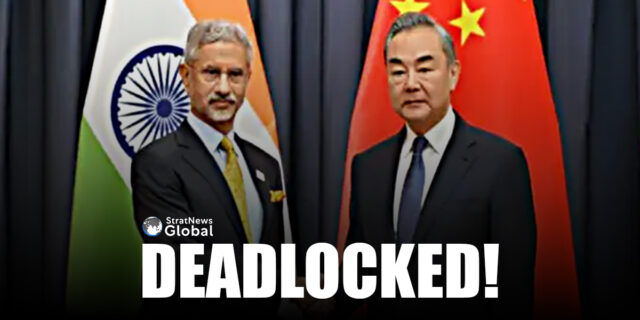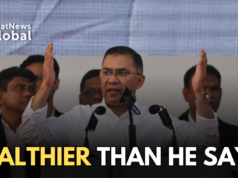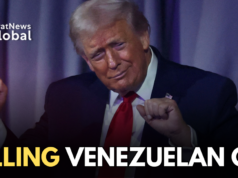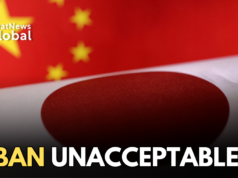When S Jaishankar met his Chinese counterpart Wang Yi on the sidelines of the Asean-related foreign ministers’ consultations in Vientiane, Laos on Thursday, the MEA press note sounded a familiar note:
“Their talks focused on finding an early resolution of the remaining issues along the Line of Actual Control to stabilize and rebuild bilateral relations.”
Note the word rebuild, both sides not just India accept that the relationship has been damaged since Galwan and needs repair.
Jaishankar, Wang Yi “agreed on the need to work with purpose and urgency to achieve complete disengagement at the earliest. Peace and tranquility on the borders and respect for the LAC are essential for normalcy in bilateral relations.”
The release underscored the need to abide by all bilateral agreements, protocols and understandings “reached between the two governments in the past “.
Dr Jaishankar stressed “mutual respect, mutual interest and mutual sensitivity”, a point he has made before.
Where does one go from here? Clearly the two sides remain deadlocked and while there is speculation that at the BRICS summit in Johannesburg last year, a blueprint for a possible resolution was discussed, nothing came of it.
Diplomats and China scholars wonder if the coming of Trump could spur Beijing to moderate its stand vis a vis the LAC.
“Trump and Modi had a good relationship when he was president and that could be rekindled if the former wins in November,” says Dr Srikanth Kondapalli of Jawaharlal Nehru University. “It could put pressure on China as the last thing they want to see is India moving closer to the US camp.”
It may even see questions being asked of the top political leadership in China. What was achieved at Galwan? What was the strategy? What is being done to ensure India does not end up in the US camp?
There is another worry for Beijing.
“A Trump presidency could see more curbs on the flow of China’s manufactured goods into the US,” says Dr Kondapalli. “With growth rates falling, 21% unemployment among youth and the collapse of some regional and provincial banks, Beijing cannot afford to see its $580 billion trade with the US go down the tube. It could be the breaking point for the Chinese street.”
China may also fear diplomatic isolation from an unexpected quarter. Russia’s President Vladimir Putin has been shoring up alliances in Asia in what seems to be a clear move to balance his dependence on China.
Putin’s summit with North Korea’s Kim Jong-un in Pyongyang was the first such meeting in 24 years. The icing on the cake was a mutual defence treaty, a strategic pact at a time when both are in an escalating standoff with the West.
Pyongyang is supplying munitions to Russian forces in Ukraine, while Moscow is providing economic aid and technology transfers that could enhance the lethality of the north’s nuclear weapons.
It may have left the Chinese distinctly uneasy as it shares a border with the north that runs over 1,300-km (compared to the 17-km Russia shares with the north). In the event of a nuclear confrontation, China would be collateral damage.
Putin also went to Vietnam, a country engaged in a tense standoff with China over islands and oil drilling in the South China Sea. All in all, from China’s point of view, a disturbing scenario but would that see Beijing relent vis a vis India?
Thirty eight years in journalism, widely travelled, history buff with a preference for Old Monk Rum. Current interest/focus spans China, Technology and Trade. Recent reads: Steven Colls Directorate S and Alexander Frater's Chasing the Monsoon. Netflix/Prime video junkie. Loves animal videos on Facebook. Reluctant tweeter.





